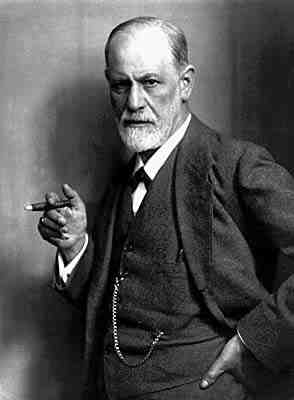|
return to 2004
Concerning
Art Interpretation

by
Miles Mathis
Analyzing art has become a
big business. In fact, it is much bigger than the business of art
itself. Besides critics, we have art historians, art
administrators, art professors, museum staff, gallery staff,
magazine editors, and various other experts in the field. These
people write books and articles, prepare lectures, give guided
tours, release press kits, write government proposals, and so on.
And, in many ways, the business of art itself has become
analyzing art. Even given an artist and an artwork, it is often
hard to say where the interpretation stops and the creation
starts. A fair percentage of the artists are analyzers of art
themselves: the "art" is in the analysis. With the
avant garde it is often difficult to separate the artifact from
the press kit. In many cases, the press kit is more interesting
than the art. Often it took longer to come up with it.
Given this, you would
expect that all this analyzing and interpreting has reached a
fair degree of complexity. And you would be corrrect—as long as
you don't confuse complexity with subtlety and rigor. Modern art
theory is maze of neo-psychoanalysis, behaviorism, feminism,
deconstructionism, post-colonialism, multi-culturalism and a
thousand other mostly meaningless -isms. They are all basically
agenda-isms of one sort or another, meaning that they are excuses
for the writer to tie his cause to art. They allow people who are
not really interested in art and have no feeling for art to talk
about politics or literature or economics or psychology or
science, but to do so in a more "creative" way. In
seeming to talk about art, they transcend the dryness or the
straightforwardness of their own field. And besides, the field of
art is so liberating: no peer review here, no bothersome facts to
get in the way. The ends completely justify the means, and if the
means include inconsistencies and fabrications, they can be
written off as paradoxes and fantasies.
The contradiction at the
heart of all this is never addressed, since to address it would
be to undercut all the fun and freedom. That contradiction is
that "understanding" art has absolutely nothing to do
with politics or behaviorism or psychoanalysis or any other
analysis or interpretation or science. Understanding art is not
like understanding why women were denied the vote, or how
improper potty-training leads to neuroticism, or what happens to
a single photon in the reduction of the wave packet. You do not
come to understand art through analysis. You do not apply the
powerful tools of the neocortex in order to box it and bag it.
You do not subdue it with the Ego and explode it into tiny
categories. No, you soak it up like a dream, using the infinite
connectivity of the inner brain and the embrace of the Id. You do
lots of non-wordable stuff, since there are no words down there,
below language. It is all ultimately unanalyzable, since it is
also below analysis—since analysis is a tool of the neocortex.
The neocortex doesn't like to admit this: it likes to think it is
the only game in town. The neocortex is a jealous scholar. But it
is nonetheless a fact: the fancy tools of the neocortex, whether
applied to the contents of the inner brain, or to its
expression—which is art—yield next to nothing in the way of
usable information. They yield only pseudo-factoids, things that
have the shape of a fact but nothing inside.
Understanding
art is not understanding the facticity of art—it is not
understanding how it is made, or even why. Understanding art is
coming to successfully feel art. You may say, hah, any fool can
feel art, it takes a very smart person to unlock the secrets of
art. But this is the opposite of the truth. The secret of art is
the feeling. That is whole esoteric depth of it, and the
analytical "secret" of art is really nothing but a dry
description of commonplaces. Besides, most fools cannot feel art.
In my experience, most people don't feel a goddamned thing in
front of art, no matter how smart or dumb they are, since they
have lost the habit of feeling in general. Especially with regard
to art, the smarter they are the more likely they are to arrive
in front of a work of art with unbelievable amounts of critical
baggage—baggage that is less than useless. It is an absolute
wall.
Trying to plumb the depths of art with the tools of
analysis is like trying to plumb the depths of the ocean with an
airplane. It is precisely as absurd as trying to understand
Special Relativity with poetry or automatic writing or osmosis.
Each mystery has it own path and its own lock. There is no
general roadmap or skeleton key. This knowledge—that different
powers are achieved in different ways—is itself part of
esoteric knowledge. Pyschoanalysis may (or may not) make one an
adept at dream interpretation or the curing of bedwetters or any
number of useful skills. But it will not make one a good artist
or a good viewer of art, since art does not, in the end, require
interpretation. It requires creation, and it requires emotional
response. The creator and the responder have both partaken of the
great mystery, and come away with the treasure. The interpreter
has only come away with an interpretation.
|